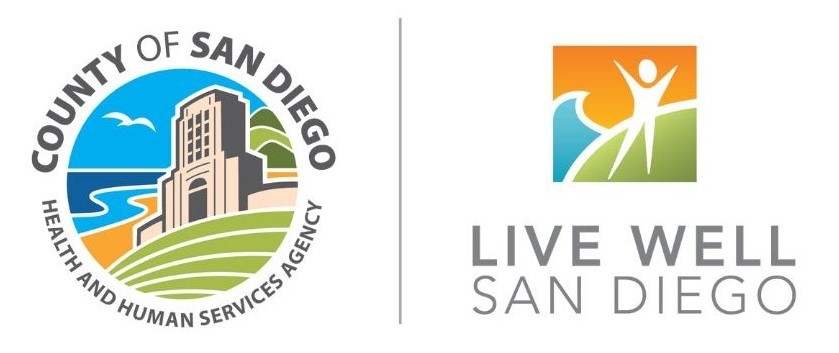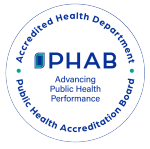Antimicrobial Resistance
Page last updated 06/04/2025.
Antimicrobial Resistance (AR)
is when pathogens, such as bacteria, viruses, and fungi, change so
that the medicine used to treat them does not work as well. Over
time, this makes it harder to treat infections, which can increase
the risk of getting sick or dying. AR pathogens can cause
healthcare-associated infections (HAIs), which are infections that a
patient can get during medical care.
This page provides resources to help healthcare workers to learn more about AR pathogens.
On this page:
[kan·duh·duh—aa·ruhs]
C. auris is an emerging AR fungus that presents a serious global health threat.
What is C. auris?
- C. auris was first identified in San Diego County in 2021.
- C. auris is a fungal pathogen that can cause serious infections. It can spread in healthcare facilities.
- People can carry C. auris on their bodies, even if it is not making them sick. This is called colonization.
- C. auris can live on surfaces and equipment in the patient care environment for long periods of time.
- C. auris can spread in healthcare facilities through contact with contaminated patient care environment and equipment.
Why is C. auris a concern?
- C. auris is often multidrug-resistant, meaning that these infections may no longer respond to the medicines used to treat them.
- It has caused outbreaks in healthcare settings. Therefore, it is important to identify C. auris so that healthcare facilities can take special precautions to stop its spread.
How can the spread of C. auris be prevented?
- Carefully follow infection control measures as outlined by
the Centers for Disease Control and Prevention
for C. auris
- Adherence to hand hygiene practices
- Adherence to Contact Precautions
- Cohorting of patients and residents in skilled nursing facilities
- Thoroughly clean and disinfect the patient care environment and equipment with an effective disinfectant (EPA list P)
- Effective Inter-facility communication of people's status of C. auris
- Screening high-risk patients
- Laboratory surveillance
Candida Auris (C. auris) Frequently Asked Questions for Patients and Family Members
English | معلومات باللغة العربية (Arabic) | 中文信息 (Chinese) | علومات به زبان دری (Dari) | فارسی (Farsi) | 한국어 정보 (Korean) | Macluumaad Af-Soomaali ah (Somali) | Español (Spanish) | Impormasyon sa Tagalog (Tagalog) | Thông Tin Bằng Tiếng Việt (Vietnamese)
Candida Auris (C. auris) What Healthcare Staff Should Know
English | معلومات باللغة العربية (Arabic) | 中文信息 (Chinese) | علومات به زبان دری (Dari) | فارسی (Farsi) | 한국어 정보 (Korean) | Macluumaad Af-Soomaali ah (Somali) | Español (Spanish) | Impormasyon sa Tagalog (Tagalog) | Thông Tin Bằng Tiếng Việt (Vietnamese)
- California Department of Public Health (CDPH) HAI Program — C. auris
- Centers for Disease Control and Prevention (CDC) — C. auris
- General Information
- C. auris: A drug-resistant germ that spreads in healthcare facilities | Haitian Creole | Korean | Spanish | Vietnamese
- General Fact Sheets
- Drug-Resistant C. auris
-
Drug-Resistant Candida Species
- Information for Patients
- C. auris Testing | Spanish
- C. auris Colonization Information for Patients | Haitian Creole | Korean | Spanish | Vietnamese
- Information for Infection Preventionists
- Candida auris: A drug-resistant fungus that spreads in healthcare facilities | Spanish
- Information for Laboratory Staff
- Screening Script auris Testing | Spanish
- Candida auris: A drug-resistant fungus that spreads in healthcare facilities | Spanish
[kaar·buh·peh·nuhm —ruh·zi·stnt—a·suh·neh·tuh·bak·tr—bow·maa·nee]
CRAB is a type of bacteria that can be resistant to many of the antibiotics available.
What is CRAB?
- Acinetobacter is a group of bacteria (germs) commonly found in the environment, (e.g., soil and water). While there are many types, the most common cause of Acinetobacter infections in humans is Acinetobacter baumannii. Acinetobacter baumannii can cause infections in the blood, urinary tract, lungs, wounds, or other parts of the body. It can also colonize, or live on a person, especially in their respiratory secretions (sputum) or open wounds without causing infections or symptoms.
Why is CRAB a concern?
- Carbapenems are a class of very powerful antibiotics, often only used to treat severe bacterial infections.
- Acinetobacter, and many other bacteria, can adapt quickly that many antibiotics are not effective in treating infections, including carbapenem antibiotics. This leads to the inability to effectively treat infections caused by CRAB, and other similar pathogens.
How can the spread of CRAB be prevented?
- Carefully follow infection control measures as outlined by
the Centers for Disease Control and Prevention for
CRAB.
- Adherence to hand hygiene practices
- Adherence to Contact Precautions
- Cohorting of patients and residents in skilled nursing facilities
- Thoroughly clean and disinfect the patient care environment and equipment with an effective disinfectant (EPA list P)
- Effective Inter-facility communication of people's status of CRAB
- Screening high-risk patients
- Laboratory surveillance
CRAB Frequently Asked Questions for Patients and Family Members
English | معلومات باللغة العربية (Arabic) | 中文信息 (Chinese) | علومات به زبان دری (Dari) | فارسی (Farsi) | 한국어 정보 (Korean) | Macluumaad Af-Soomaali ah (Somali) | Español (Spanish) | Impormasyon sa Tagalog (Tagalog) | Thông Tin Bằng Tiếng Việt (Vietnamese)
CRAB What Healthcare Staff Should Know
English | معلومات باللغة العربية (Arabic) | 中文信息 (Chinese) | علومات به زبان دری (Dari) | فارسی (Farsi) | 한국어 정보 (Korean) | Macluumaad Af-Soomaali ah (Somali) | Español (Spanish) | Impormasyon sa Tagalog (Tagalog) | Thông Tin Bằng Tiếng Việt (Vietnamese)
- CDPH HAI Program
- General Information
- CDC
- General Information
[kaar·buh·peh·nuhm —ruh·zi·stnt—soo·duh·mow·nuhs—eh·roo·gi·now·suh]
CRPA is a type of bacteria that presents a serious public health threat.
What is CRPA?
- Pseudomonas aeruginosa are a type of bacteria commonly found in water sources and healthcare environments. These bacteria can become resistant to several types of antibiotics called Carbapenems, which are medicines used to treat bacteria. They can cause serious infections in your blood, lungs, and other parts of the body. They can spread in healthcare settings through contaminated hands, water, medical equipment, and surfaces. Pseudomonas aeruginosa can often live in your body even if you don’t feel sick. This is called colonization.
Why is CRPA a concern?
- When Pseudomonas aeruginosa resist the medicine used to treat them, such as Carbapenems, it is much harder to treat infections caused by CRPA. This means that treatment options become limited and less effective against infections caused by CRPA. It is important to note that Carbapenems are the last line of defense, or last-resort antibiotics, because they are very effective against many types of bacteria and are less vulnerable to most beta-lactam resistances, which prevents other treatments being effective in treating bacterial infections.
How can the spread of CRPA be prevented?
- Carefully follow infection control measures as outlined by
the Centers for Disease Control and
Prevention for CRPA.
- Adherence to hand hygiene practices
- Adherence to Contact Precautions
- Cohorting of patients and residents in skilled nursing facilities
- Thoroughly clean and disinfect the patient care environment and equipment with an effective disinfectant (EPA list P)
- Effective Inter-facility communication of people's status of CRPA
- Screening high-risk patients
- Laboratory surveillance
CRPA Frequently Asked Questions for Patients and Family Members
English | معلومات باللغة العربية (Arabic) | 中文信息 (Chinese) | علومات به زبان دری (Dari) | فارسی (Farsi) | 한국어 정보 (Korean) | Macluumaad Af-Soomaali ah (Somali) | Español (Spanish) | Impormasyon sa Tagalog (Tagalog) | Thông Tin Bằng Tiếng Việt (Vietnamese)
CRPA What Healthcare Staff Should Know
English | معلومات باللغة العربية (Arabic) | 中文信息 (Chinese) | علومات به زبان دری (Dari) | فارسی (Farsi) | 한국어 정보 (Korean) | Macluumaad Af-Soomaali ah (Somali) | Español (Spanish) | Impormasyon sa Tagalog (Tagalog) | Thông Tin Bằng Tiếng Việt (Vietnamese)
- CDPH HAI Program
- General Information
- CDC
- General Information
[kaar·buh·peh·nuhm—ruh·zi·stnt—en·tr·ow·bak·ter·ah·luhs]
CRE is a group of
bacteria that can be resistant to many commonly used
antibiotics.
What is CRE?
- Enterobacterales are a large group of different types of bacteria that commonly cause infections in healthcare settings. They are normally found in the human gut and can cause serious infections in the blood, lungs, urinary tract, and wounds. They can be spread from person-to-person, contaminated hands, and unclean medical equipment. Many different types of Enterobacterales, including Klebsiella pneumoniae and E. coli., can become resistant to several types of antibiotics, such as Carbapenems. They can live in your body even if you do not feel sick, which is called colonization.
- Carbapenems are a type of antibiotic that is very effective in combatting against a wide variety of bacteria. Carbapenems are also commonly known to be a last-resort antibiotic since many antibiotics used first to treat Enterobacterales become vulnerable to beta-lactam resistances while Carbapenems are less vulnerable to those resistances. When Enterobacterales become resistant to Carbapenems, treatments options become limited for people infected with CRE and can cause worse health outcomes.
How can the spread of CRE be prevented?
- Carefully follow infection control measures as outlined by
the Centers for Disease Control and
Prevention for CRE.
- Adherence to hand hygiene practices
- Adherence to Contact Precautions
- Cohorting of patients and residents in skilled nursing facilities
- Thoroughly clean and disinfect the patient care environment and equipment with an effective disinfectant (EPA list P)
- Effective Inter-facility communication of people's status of CRE
- Screening high-risk patients
- Laboratory surveillance
CRE Frequently Asked Questions for Patients and Family Members
English | معلومات باللغة العربية (Arabic) | 中文信息 (Chinese) | علومات به زبان دری (Dari) | فارسی (Farsi) | 한국어 정보 (Korean) | Macluumaad Af-Soomaali ah (Somali) | Español (Spanish) | Impormasyon sa Tagalog (Tagalog) | Thông Tin Bằng Tiếng Việt (Vietnamese)
CRE What Healthcare Staff Should Know
English | معلومات باللغة العربية (Arabic) | 中文信息 (Chinese) | علومات به زبان دری (Dari) | فارسی (Farsi) | 한국어 정보 (Korean) | Macluumaad Af-Soomaali ah (Somali) | Español (Spanish) | Impormasyon sa Tagalog (Tagalog) | Thông Tin Bằng Tiếng Việt (Vietnamese)
- CDPH HAI Program
- General Information
- CDC
- General Information
Antimicrobial stewardship programs work to improve antibiotic prescribing and use, which is critical to effectively treat infections, protect patients from harm from unnecessary antimicrobial use, and combat antimicrobial resistance. Antimicrobial stewardship programs focus on improving/optimizing management/treatment (e.g., antimicrobial medications), however diagnostic stewardship works “upstream” to guide appropriate use of diagnostic testing and preventing false positives and overdiagnosis (AHRQ). Both antimicrobial stewardship and diagnostic stewardship work hand-in-hand to combat antibiotic resistance.
The County of San Diego is collaborating with local and state partners to support antimicrobial stewardship and diagnostic stewardship efforts. For more information, please contact phs.hai.hhsa@sdcounty.ca.gov.
Below are posters and handouts that can be used to support healthcare facilities/providers on antimicrobial stewardship and diagnostic stewardship efforts.
- Addressing Asymptomatic Bacteriuria (ASB)
For more information, contact the San Diego HAI program through our contact form, via e-mail at phs.hai.hhsa@sdcounty.ca.gov, or call the Epidemiology Unit at (619) 692-8499.






